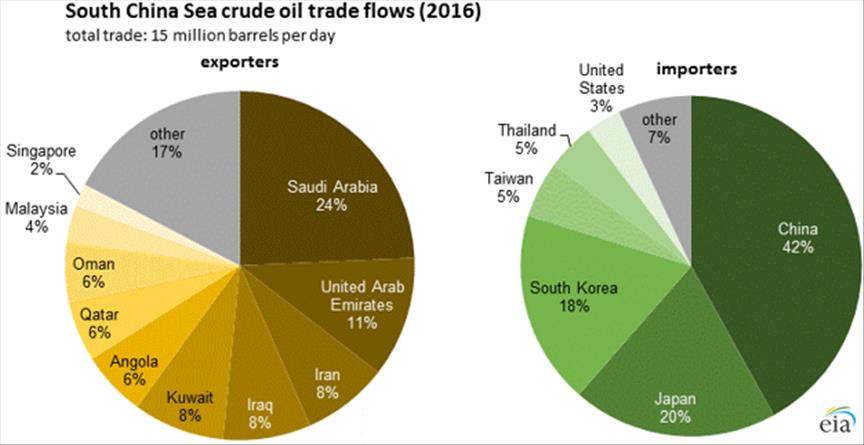"More than 90 percent of crude oil volumes flowing through the South China Sea in 2016 transited the Strait of Malacca, the shortest sea route between suppliers in Africa and the Persian Gulf and markets in Asia, making it one of the world’s primary oil transit chokepoints," the agency said.

In addition, a significant amount of crude oil (about 1.4 million b/d) passes through the strait on its way to Singapore and the west coast of Peninsular Malaysia, where it is refined before transiting the South China Sea in the form of petroleum products, it added.
According to the EIA, the South China Sea is a major trade route for the Middle East, which accounted for more than 70 percent of total South China Sea crude oil shipments in 2016.
"Saudi Arabia is the largest source of crude oil, making up almost one-fourth of crude oil volumes traversing the South China Sea. More than half of Saudi Arabia's global crude oil shipments traveled through the South China Sea in 2016," it said, adding the route also accounted for 52 percent of Iran's crude oil exports in 2016.
According to the statement, the three crude oil importers with the largest volumes passing through the South China Sea—China, Japan, and South Korea—collectively accounted for 80 percent of total crude oil volumes transiting the South China Sea in 2016.
About 90 percent of China's 2016 maritime crude oil shipments were transported through the South China Sea while about 90 percent of the crude oil imported by Japan and South Korea was shipped through the same route.
"Most of Japan's and South Korea's imports are from Middle Eastern suppliers and are transported through the Strait of Malacca and then the South China Sea," the EIA added.
Beijing claims nearly all of the South China Sea, which is one of the hotly contested regions in the world. Southeast Asian nations Brunei, Malaysia, the Philippines, Taiwan and Vietnam have overlapping claims on the waters.
In 2016, the Permanent Court of Arbitration in The Hague concluded that Beijing's claims to areas of the resource-rich sea have no legal basis. The arbitration was launched by the Philippines, whose "sovereign rights" it said China had violated. China rejected the ruling.
Artificial islands in the South China Sea and China's military operations in the region are a continued source of tension between the U.S., China and regional countries.
(Anadolu Agency)